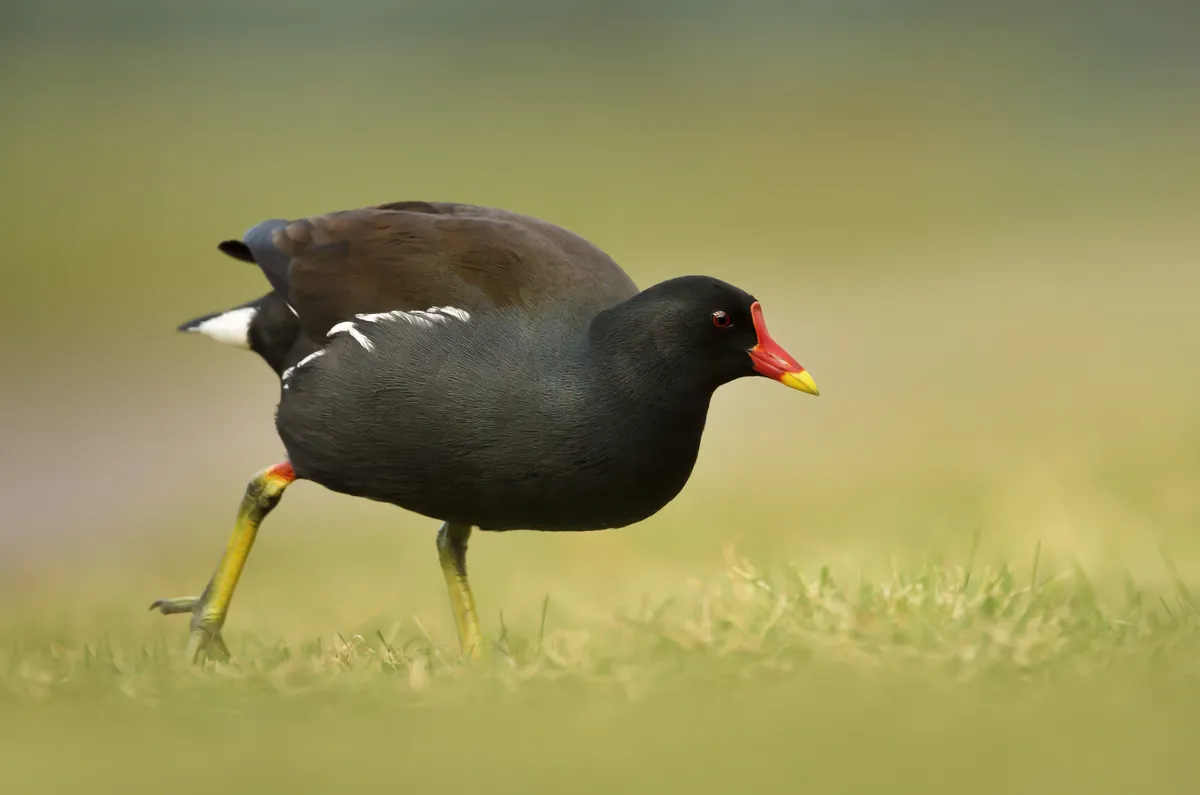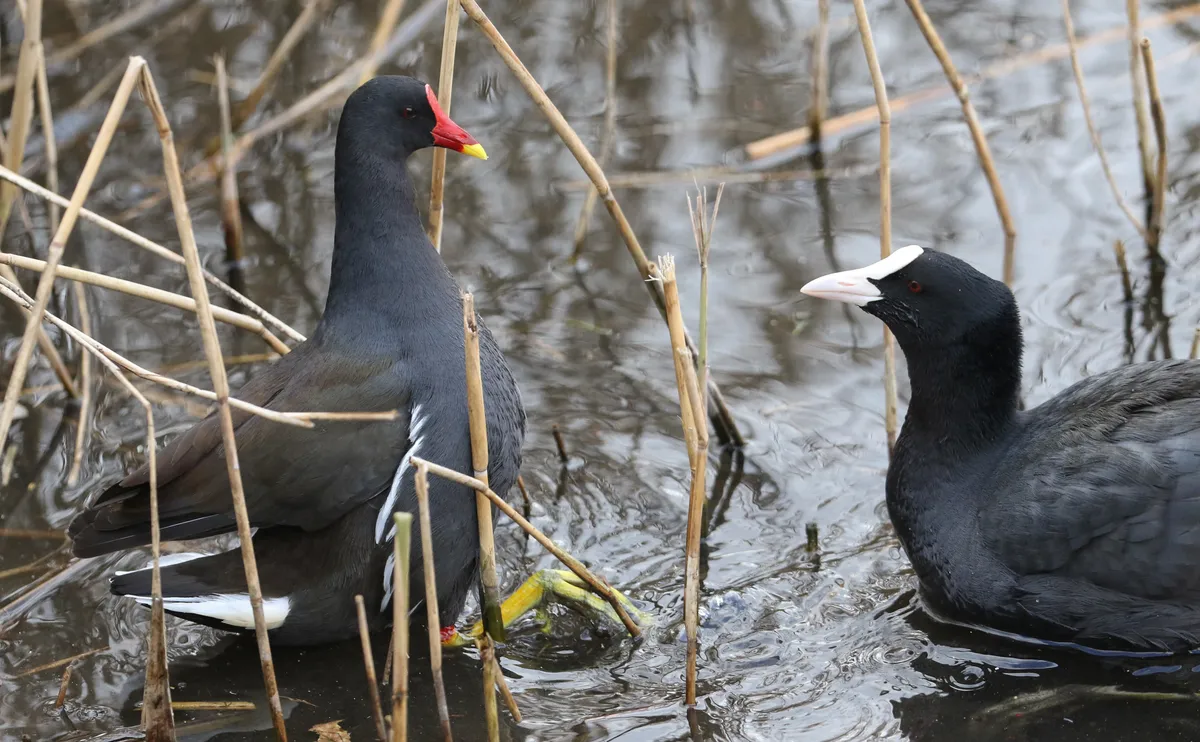The moorhen (Gallinula chloropus) is an amphibious all-rounder, most often seen swimming – but oddly for a waterbird, hardly to Olympic standard.
It is often at the surface of the water, its long-toed, unwebbed feet giving it a laboured swimming style, its head bobbing with the effort.
Yet it also runs over mud and vegetation very easily and is perfectly capable of clambering around branches of trees, where it may roost at night.
In this guide, we take a closer look at the moorhen, revealing what they look like, where they live, what they eat and how to tell the difference between a moorhen and coot.
Interested in learning more about British wildlife? Check out our guides to frogs and toads, wading birds and reptiles.
Rails, crakes and coots
The rail family includes moorhens, coots, water rails, corncrakes and spotted crakes. Find out more about these characterful birds with our spotter's guide.

What do moorhens look like?
The moorhen has a dark body – similar to that of a coot – but the colour of the bill instantly separates the species. The moorhen’s bill is orange with a yellow tip (but dull in juvenile birds), and it looks a little cheap and kitschy.
If you look closely, you’ll also spot a broken white line along the middle of the body, and brilliant white under the tail. The legs are pale green, but with saucy red garters. The bird is 30–38cm in size.

Moorhen call
Listen out for the explosive “curruck” call, which gives the impression the moorhen has just been unexpectedly tickled.

Moorhen habitat
The name moorhen is puzzling at first, until you realise that it derives from “Mere-hen”, a mere being a shallow pond or wetland. In such places, moorhens abound, often living quite secretive lives among thick vegetation.
Moorhen diet
The moorhen feeds on a variety of items from berries and seeds to fish, crustaceans and spiders.

Moorhen breeding, eggs and chicks
The moorhen’s lifestyle is full of surprises. Pairing up is decidedly fluid, and quite often includes polygamy and incest.
Moorhens also have the extraordinary, cuckoo-like habit of laying eggs in the nests of other birds, sometimes those of their own species, but also coots.
The nests and chicks are similar to those of coots. When moorhens are young, they sometimes help their parents with the care of the next brood of chicks.

Moorhen distribution
There are 240,000 breeding pairs or moorhen in the UK (320,000 in winter). They are common and widespread.
Please note that external videos may contain ads:
Common moorhen (Gallinula chloropus) family, recorded in Egmond-Binnen, Netherlands/Credit: Birdfun
